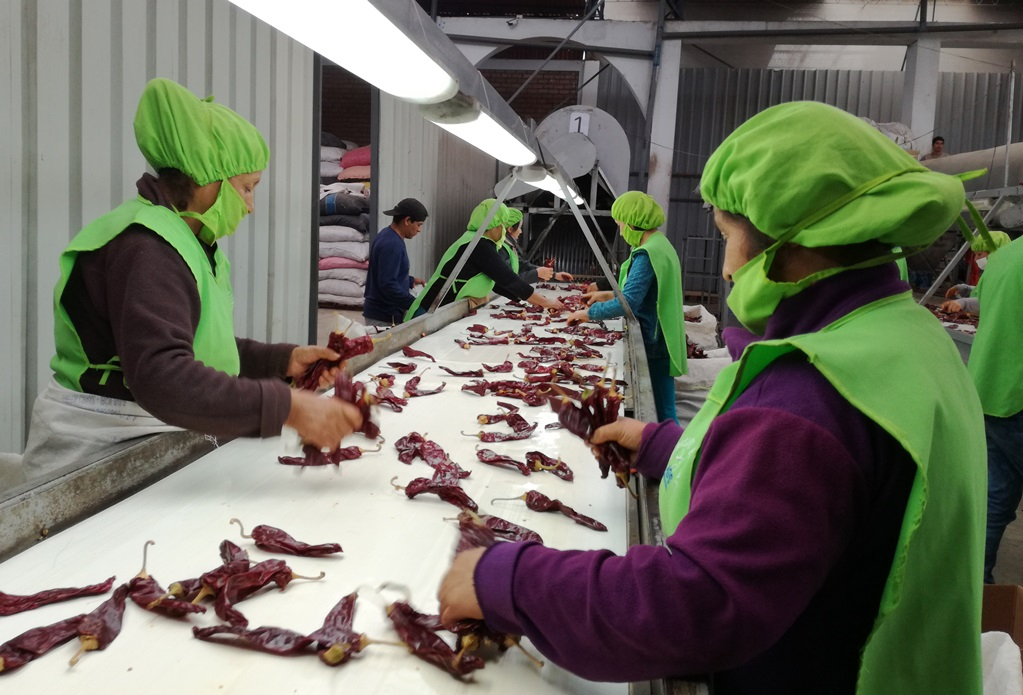
The number of direct, indirect and induced jobs related to exports grew by 1.3% between January and May of this year, reaching 1,406,272 workers, reported the Center for Research on Global Economy and Business of the CIEN-ADEX Exporters Association.
Of the 14 sectors, 6 were on the rise: primary agriculture (45.8%), miscellaneous (11.2%), mining (10.8%), chemicals (7.1%), agroindustry (3.3%) and iron and steel (2%). However, according to the report, The non-traditional sector was the one that generated the most jobs in this period with 860,038 (-5.5%) and the traditional sector with 546,234 (14.1%). It should also be noted that mining reached its historical record with 418,114 jobs.
Meanwhile, the other eight sectors decreased, with fishing and aquaculture (-44.4%) and timber (-26%) being the ones with the greatest decline. Meanwhile, non-metallic mining (-22.2%), traditional fishing (-14.3%), hydrocarbons (-14%), clothing (-11%), metalworking (-5.5%) and textiles (-0.8%) also reported declines.
Puno was the region that grew the most
In the period studied, Puno registered a growth of 153.2%, making it the department that most increased its employability rates within the export sector. Loreto (91.1%) and Cajamarca (61.7%) followed in second and third place.
On the other hand, Pasco, Cusco, San Martin, Moquegua, Madre de Dios, Lima, Huancavelica, La Libertad, Amazonas, Ayacucho, Ica, Huanuco, Ancash and Arequipa also reported an increase.
Thus, jobs linked to the export sector increased in the Andean region (27.7%), the Amazon (12.5%) and Lima and Callao (5.4%), and decreased in the Coast (-6.8%). Lima, Callao and the Coast accounted for 82% of the total.
More than 287,000 jobs were created in May alone
The monthly breakdown of the report indicates that 287,004 jobs were created in May in the export sector. This represented a positive evolution of 13.5% compared to the same month last year, when 252,791 new jobs were reported. In this line, the traditional sector grew 28.1%.
Of these, 11 were on the rise: primary fishing (392.6%), hydrocarbons (27.8%), various (27.2%), mining (24.9%), agriculture (19.7%), agroindustry (12.4%), textiles (12.3%), metalworking (12.3%), clothing (9.4%), iron and steel (8.5%) and chemicals (4.7%).
However, jobs in the non-traditional sector experienced declines, with fishing and aquaculture (-32.5%), non-metallic mining (-15.9%) and timber (-8.2%) being the most affected.
It is also important to highlight that Asia was the main driver of jobs in Peru, helping to generate 94,777 (16.3%) in May. This was followed by North America with 74,492 (16.1%), Europe with 62,128 (6.8%), Latin America with 50,886 (6.8%), Africa with 2,970 (143.3%) and Oceania with 1,705 (94.7%).
Source: Larepublica
Alia is a professional author and journalist, working at 247 news agency. She writes on various topics from economy news to general interest pieces, providing readers with relevant and informative content. With years of experience, she brings a unique perspective and in-depth analysis to her work.











